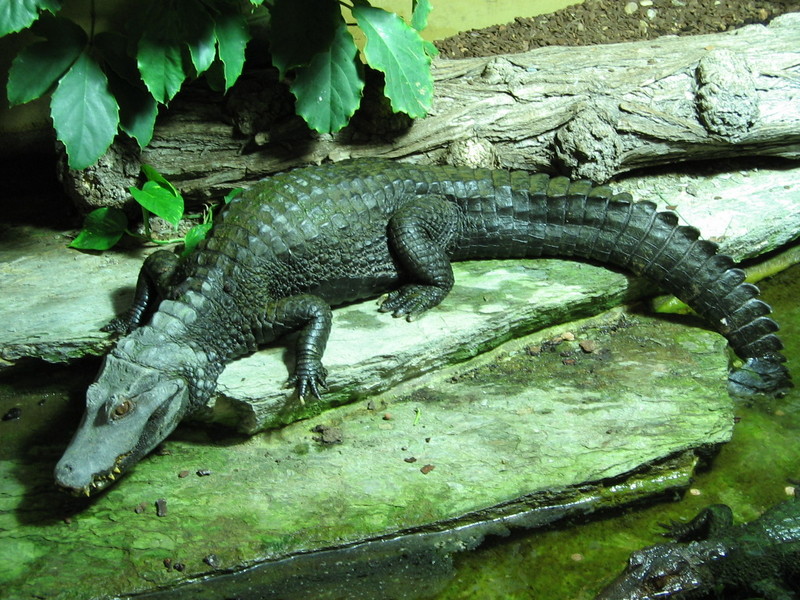|
| Query: reptile | Result: 1781st of 2585 | |
Cuvier's Dwarf Caiman (Paleosuchus palpebrosus) - Wiki
| Subject: | Cuvier's Dwarf Caiman (Paleosuchus palpebrosus) - Wiki
| |

| Resolution: 1024x768
File Size: 394235 Bytes
Date: 2005:04:30 14:35:21
Camera: Canon PowerShot A400 (Canon)
F number: f/3.8
Exposure: 1/40 sec
Focal Length: 277/32
Upload Date: 2007:10:13 02:05:42
|
Cuvier's Dwarf Caiman
From Wikipedia, the free encyclopedia
[Photo] Cuvier's Dwarf Caiman (Paleosuchus palpebrosus). Brauen-Glattstirnkaiman (Paleosuchus palpebrosus). Fotograf: Factumquintus (http://de.wikipedia.org/wiki/Benutzer:Factumquintus). Datum: 30. April 2005. | Permission is granted to copy, distribute and/or modify this document under the terms of the GNU Free Documentation License, Version 1.2 or any later version published by the Free Software Foundation; with no Invariant Sections, no Front-Cover Texts, and no Back-Cover Texts. A copy of the license is included in the section entitled "GNU Free Documentation License". |
The Cuvier's Dwarf Caiman (Paleosuchus palpebrosus) is a crocodilian reptile from northern South America. It is found in Bolivia, Brazil, Colombia, Ecuador, French Guiana, Guyana, Paraguay, Peru, Surinam and Venezuela. It lives primarily near fast stretches of stream, but also lives in nutrient-deficient waters.
It is also the smallest species of the alligatoridae family reaching up to 1.5 meters of length. Juvenile dwarf caimans eat invertebrates, while adult caimans eat both fish and invertebrates. It uses burrows as shelter during the day. It lays eggs on a mounded nest which hatch in about three months.
http://en.wikipedia.org/wiki/Cuvier%27s_Dwarf_Caiman
| The text in this page is based on the copyrighted Wikipedia article shown in above URL. It is used under the GNU Free Documentation License. You may redistribute it, verbatim or modified, providing that you comply with the terms of the GFDL. |
|
^o^
Animal Pictures Archive for smart phones
^o^
|
|

